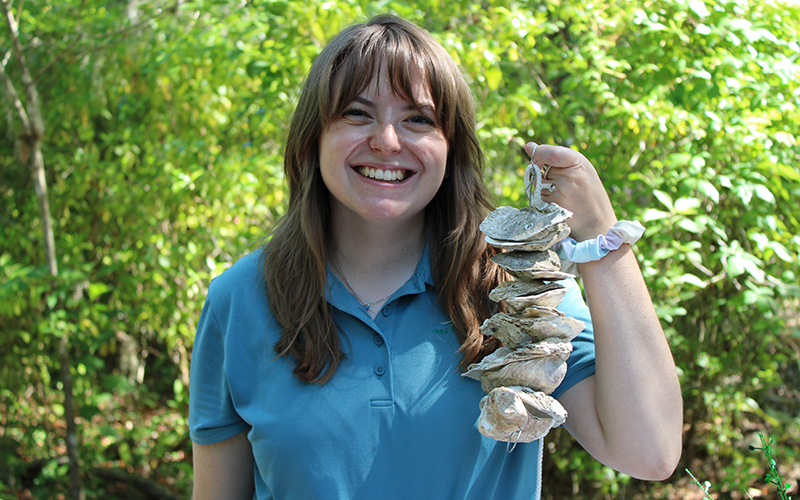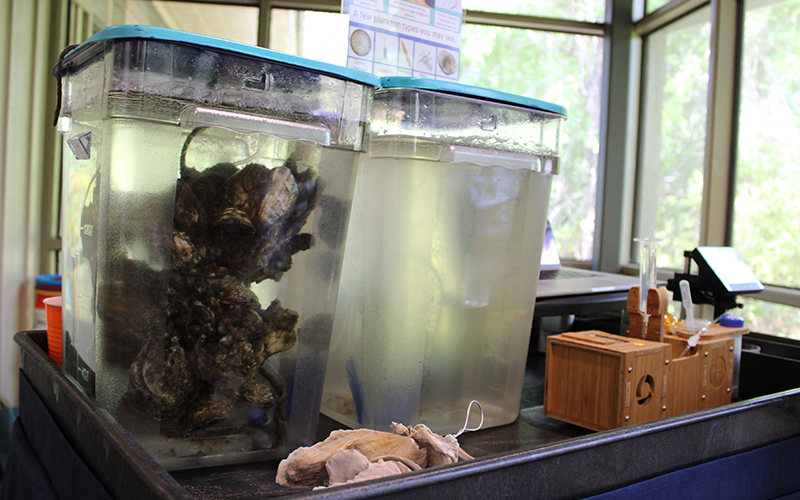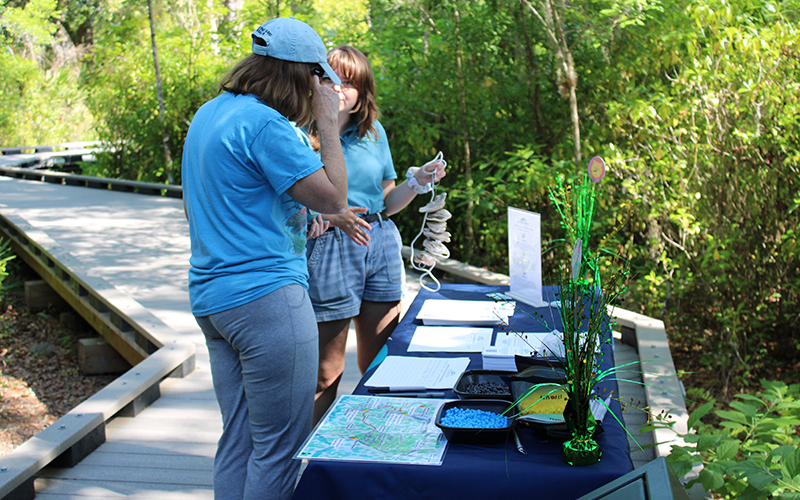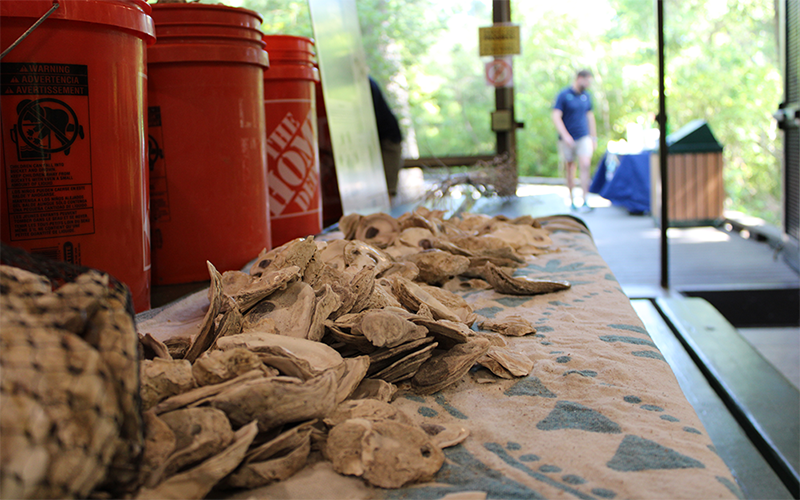Written by: Jess Van Vaerenbergh, USF CMS graduate student
Eastern oysters (Crassostrea virginica) are ecosystem engineers. For much of Tampa Bay’s history, these unassuming bivalves have provided the estuary with valuable ecosystem services such as water filtration, shoreline protection, habitat, and food for humans and wildlife.
During the late 1800s and early 1900s, oyster reefs began to suffer from dredging and development in Tampa Bay, where several communities were built on once-flourishing oyster ecosystems. Oyster populations are now down almost 90% from historic levels. Several nonprofits, researchers, and local governments have launched projects since the early 2000s to restore oyster habitats. However, the impacts of these efforts are unclear.
Olivia Blondheim, a PhD student at the USF College of Marine Science (CMS), aims to improve estimates of oyster water filtration, which benefits water quality for coastal communities. One of her main research interests is developing novel ways to measure filtration rates of oysters on both natural and artificial substrates in urbanized estuaries. This includes oyster reefs, mangrove prop roots, and vertical oyster gardens (VOGs).
“VOGs are made from recycled oyster shells strung together on a rope or wire and suspended from docks or seawalls,” Blondheim said. "Within just two years, VOGs start teeming with life, hosting barnacles, sponges, sea squirts, worms, shrimp, marine snails, and more. It's like a small underwater apartment living on the recycled shells, helping to artificially restore oyster ecosystem benefits."

Blondheim holding a vertical oyster garden that was built at the latest outreach event at Brooker Creek Reserve. PHOTO CREDIT: Jess Van Vaerenbergh.
These handmade habitats have become popular in the Tampa Bay area, but there are currently no published scientific studies about the water filtration services VOGs provide compared to oysters on natural substrates.
“One individual oyster can filter up to 50 gallons of water a day,” Blondheim said. “The question I’m researching is whether VOGs can improve water quality and provide wildlife habitat comparable to oysters on other substrates.”

An educational display demonstrating how oysters filter and clean water. The tank containing live oysters has clearer water than the tank without oysters. PHOTO CREDIT: Jess Van Vaerenbergh.
In addition to her research at CMS, Blondheim serves as the scientific outreach coordinator at the Gulf Shellfish Institute (GSI), where she organizes various community outreach events with the primary goal of engaging the public by assembling VOGs. During these events, she not only educates the local community about the ecological significance of oysters but also involves citizens in her research by building VOGs and enrolling them in the GSI citizen science program.
As part of this program, community members across the Tampa Bay area can take a VOG home and hang it from their dock or seawall. Blondheim and GSI staff then monitor the VOG over one year to see how much biomass accumulates on the VOG and how water quality parameters like salinity, temperature, and dissolved oxygen may affect its success. The VOGs that are constructed during these events but are not adopted are distributed via “VOG boxes” across the Tampa Bay region, where community members can pick them up later.
“VOGs are an easy, hands-on way to get community members involved in restoring oyster ecosystem services to Tampa Bay,” Blondheim said. “I hope through these events people can gain a better appreciation for oysters and all the ways they help us and our local ecosystems.”

Blondheim talking with a participant who joined the Gulf Shellfish Institute’s Citizen Science Program. At the Booker Creek Preserve outreach event, they built a vertical oyster garden to install on their dock at home. PHOTO CREDIT: Jess Van Vaerenbergh.
Almost 700 people attended the recent Earth Day celebration at Brooker Creek Preserve in Tarpon Springs. They built more than 100 VOGS for Blondheim’s research, bringing the total to 722 VOGs since September 2023.
“I love working with the community and seeing how excited people get when they realize that this is an additional way that they can help care for their local waterways,” Blondheim said. “Building VOGs allows people to make the connection between enjoying oysters at a restaurant and then seeing that shell being used to help support local oysters."
